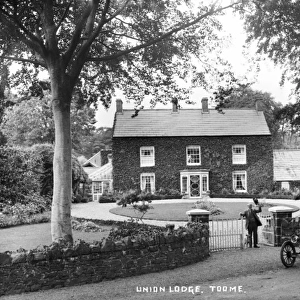Home > Europe > United Kingdom > Northern Ireland > County Antrim > Antrim
Kieselguhr Industry, Toome, Grants Calcining and Grinding F
![]()

Wall Art and Photo Gifts from Mary Evans Picture Library
Kieselguhr Industry, Toome, Grants Calcining and Grinding F
Kieselguhr Industry, Toome, Grants Calcining and Grinding Factory - a view of a factory for grinding clay. There is a man standing at a door. (Location: Northern Ireland; County Antrim; Toome). Date: circa early 1900s
Mary Evans Picture Library makes available wonderful images created for people to enjoy over the centuries
Media ID 14365191
© National Museums NI / Mary Evans
FEATURES IN THESE COLLECTIONS
> Europe
> United Kingdom
> Northern Ireland
> Antrim
> Europe
> United Kingdom
> Northern Ireland
> County Antrim
> Antrim
EDITORS COMMENTS
This photograph offers a glimpse into the past of Toome, a quaint town located in County Antrim, Northern Ireland. The image depicts the Kieselguhr Industry, a factory dedicated to the calcining and grinding of clay. The factory, which dates back to the early 1900s, was an essential part of the local economy during that era. In the foreground of the photograph, a man is seen standing at the entrance of the factory, possibly overseeing the day's operations or greeting workers as they arrive. The factory's architecture is a testament to the industrial revolution that swept through Europe and North America during the late 19th and early 20th centuries. The red-brick buildings, with their tall chimneys billowing out smoke, reflect the intense labor and energy required to process the raw clay into a refined product. Kieselguhr, also known as diatomaceous earth, is a naturally occurring siliceous sedimentary rock that is composed of the fossilized remains of diatoms, tiny aquatic organisms. The material was highly valued for its insulating properties and was used extensively in the production of glass, ceramics, and refractories. The calcining and grinding process involved heating the clay to high temperatures to release the diatomaceous earth, which was then ground into a fine powder. This photograph provides a fascinating window into the past, offering a glimpse into the daily life and industrial processes of Toome and County Antrim during a bygone era. The man at the door, the smokestacks, and the surrounding landscape all contribute to a rich and evocative tableau that transports us back in time.
MADE IN THE USA
Safe Shipping with 30 Day Money Back Guarantee
FREE PERSONALISATION*
We are proud to offer a range of customisation features including Personalised Captions, Color Filters and Picture Zoom Tools
FREE COLORIZATION SERVICE
You can choose advanced AI Colorization for this picture at no extra charge!
SECURE PAYMENTS
We happily accept a wide range of payment options so you can pay for the things you need in the way that is most convenient for you
* Options may vary by product and licensing agreement. Zoomed Pictures can be adjusted in the Cart.






